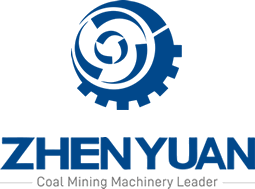I. The Basics of Roller Screens
A roller screen is a high - performance separation device. Its screening area is made up of multiple drum shafts that rotate at a consistent speed, enabling both the classification of materials and their conveyance at the same time. Sometimes called swing feeders or disc screens, these machines can handle a wide range of materials, even damp and sticky ones, much more efficiently than traditional vibrating screens. They are less likely to get clogged, which means they can keep up a steady throughput and maintain accurate screening. That's why they're widely used in mining operations.
Core Working Principles: In the screening area, there are parallel drum shafts with screening discs arranged in a staggered way. When the shafts rotate in sync, they move the materials forward and separate them by size all in one go.
Main Components: The system is made up of the screen enclosure, drive system, shaft assembly, and cleaning parts. The shaft assembly includes the motor, reducer, screening shaft, discs, parallel keys, locknuts, couplings, bearing housings, and other related components. Power is transmitted from the drive motor through the coupling to the reducer and then to the screening shaft.
II. Checks Before Starting Operation
Equipment Inspection
Mechanical Inspection: Make sure the roller shafts rotate smoothly. Check the discs for any looseness or wear. If the edge wear of a disc is more than one - third of its thickness, it needs to be replaced. Check that the bolts on the bearing housing and drive unit are tight, and that the chain tension is correct.
Electrical Inspection: Test the direction of the motor rotation. All rollers must turn in the same direction as designed. Check that the instruments on the control panel, sensors, blockage switches, and emergency stop button are all working properly.
Material and Environment Check: Clear any debris, such as metal or wood, from the screen surface and the feed inlet. Make sure the materials in the feed bin meet the specified requirements.
Parameter Setup
Adjust the distance between the rollers according to the target particle size. For example, for coal, it's 50–100 mm, and for ore, it's 100–200 mm. For models with a variable frequency drive (VFD), start the motor at about 70% of its rated speed and then adjust to the optimal speed once it's running stably.
Operator Safety Equipment
Workers must wear the required personal protective equipment (PPE), including hard hats, respiratory protection, and gloves.
III. Operating Steps
Using a roller screen involves starting it up, feeding materials, monitoring the process, and shutting it down:
Startup:
Turn on the system. Check the instrument readings and the status of the indicators. Start the motor and drive according to the procedure. Let it run without load for 2–5 minutes to make sure everything is working normally.
Feeding:
Add materials in a uniform and continuous manner. Keep the right depth of materials on the screen. Don't let oversized foreign objects get in, as they can cause blockages.
Process Control:
Keep an eye on the quality of the output at the discharge end. Adjust the rotational speed of the shafts if needed. If possible, change the distance between the rollers when the materials vary.
Shutdown:
Stop putting materials into the screen. Let any remaining materials clear out. Turn off the motor. Disconnect the power supply. Clean the equipment.
IV. Maintenance Plan
Cleaning:
Use high - pressure air or brushes to remove stuck materials from the discs and rollers, especially in the gaps between the discs, to prevent clogging. For wet residues, rinse with water, but be careful not to get the motor wet, then let it air - dry.
Component Checks:
Keep an eye on the temperature of the roller bearings. If they overheat, check for lubrication problems or wear. Inspect the chain for wear. If it's stretched more than 2%, tighten or replace it. Replace any cracked drive belts.
Lubrication:
Lubricate the bearings and gearboxes according to the schedule, usually every 200 operating hours. Replace the lubricant twice a year.
V. Important Safety Rules
Stay away from the rotating shafts when the equipment is running. Never open the guards or put objects into the roller area. Always wear the required PPE.
Before doing any maintenance: Lock and tag the power supply to prevent it from being turned on accidentally. Only qualified electricians should do electrical work.
When accessing the upper rollers, use stable scaffolding or lifts to avoid falls.
Keep metal blocks or large rocks out of the screen to prevent damage to the shafts.
If the efficiency drops, check the roller spacing or look for entangled debris.
Regularly check the bearing temperatures.
Emergency Response: If there's smoke, strong vibration, or other abnormalities, press the emergency stop button right away. Report to supervisors before trying to fix the problem.
Reliability and Support: Our high - quality roller screens come with expert engineering support and special tools to ensure maximum operational profitability.

